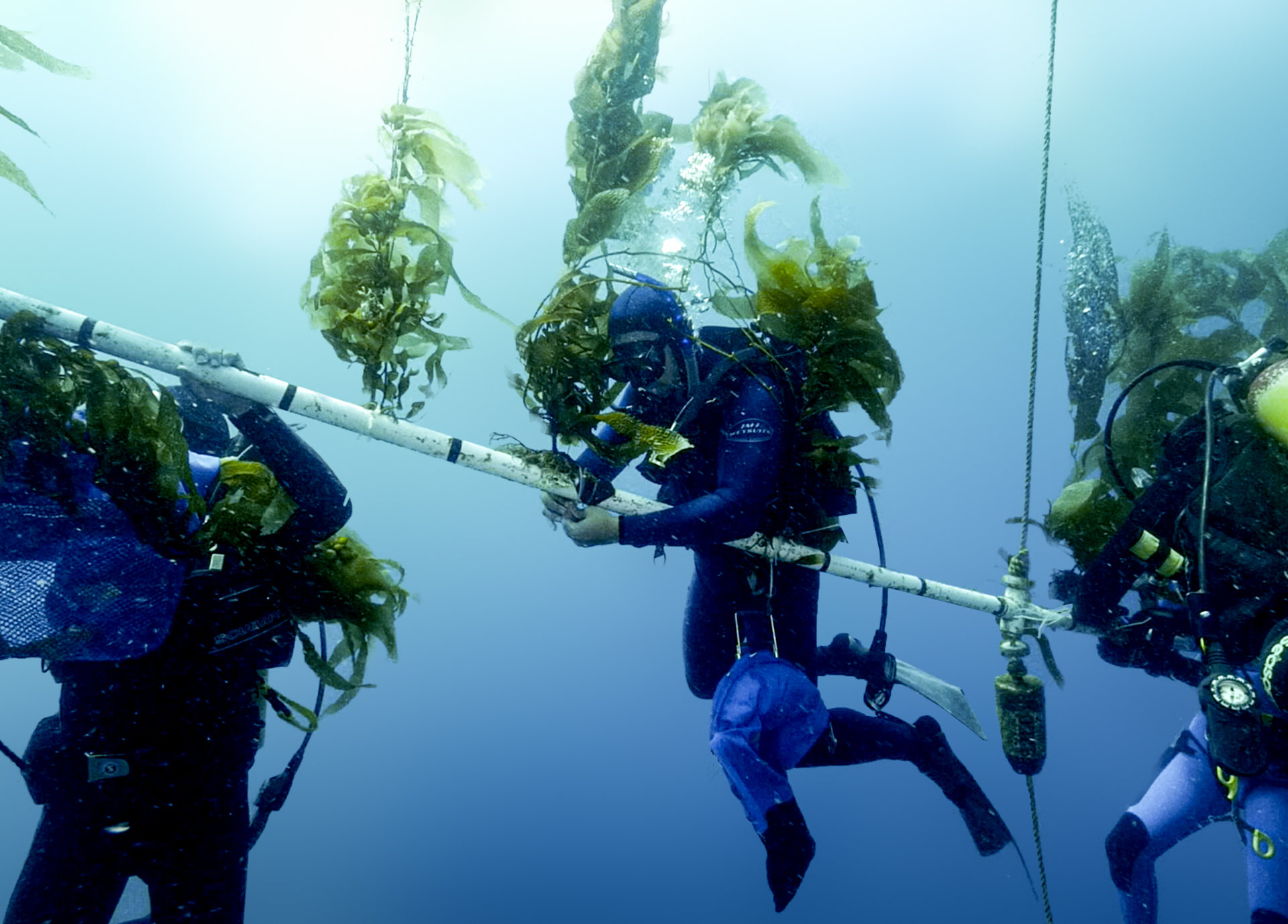Kelp Aquaculture for Sustainability
Why Giant Kelp?
Macrocystis pyrifera (commonly known as giant Pacific kelp) grows naturally in the coastal waters of California, and is part of a genus found in temperate waters worldwide. This kelp is renowned for its growth rates, with documented growth of up to more than 1 foot per day and mature lengths that can exceed 150 feet. Nicknamed the “Sequoia of the Sea,” giant kelp provides an essential habitat and food source for many marine species while sequestering carbon dioxide and producing oxygen as it grows.
These characteristics, plus the fact that kelp cultivation does not require land, freshwater, or fertilizer, have made kelp an attractive potential source of biofuel, fertilizers, and other commercial products. In addition to helping us break our dependence on fossil fuels and create more sustainable versions of common products, kelp aquaculture can also help restore essential habitats devastated by environmental changes. Overall, giant kelp can be a key part of creating a more sustainable future for our planet.

Current Research Topics
Kelp Biofuel
The challenge: Kelp’s role as a carbon sink and the efficiency at which it grows make it an attractive option for a carbon-neutral biofuel, and the open ocean provides sufficient space for growing giant kelp in the quantities needed for commercial applications. However, open-ocean cultivation of kelp and the year-round growth of biomass remain major challenges.
The sunlight kelp needs is near the water’s surface, while essential nutrients are found in deeper waters. And in near-coastal regions where kelp grows naturally, nutrients from deeper water are only available seasonally. In addition, while kelp grows quickly compared to many other organisms, it is not yet naturally abundant or fast-growing enough to be a commercially viable biofuel crop.
The solution: Using a proprietary strategy developed by Marine Bioenergy, Inc., we are testing a novel depth-cycling approach to large-scale, year-round kelp cultivation in the open ocean. After attaching kelp to a special frame, we move it between the water’s surface and the depths to maximize its exposure to both light and nutrients.
We hope this process will show that kelp can tolerate the accompanying changes in pressure and will grow more quickly when depth-cycled. If so, the depth-cycling method should enable large-scale cultivation of this valuable resource.
This research is funded by a grant to Marine Bioenergy from the U.S. Department of Energy’s ARPA-E program to support the development of advanced energy technologies (DOE ARPA-E DE-AR0000689).
Research publication: “Effects of depth-cycling on nutrient uptake and biomass production in the giant kelp Macrocystis pyrifera”
Other Topics
- Using giant kelp seed banks for selective breeding (collaboration with the USC Nuzhdin Lab and UW-Milwaukee Alberto Lab)
- Testing the physiological constraints of giant kelp gametophytes (collaboration with the Nuzhdin Lab)
- Characterizing the holobiont of giant kelp at varying stages of growth (collaboration with the MSMU Jones Lab)
